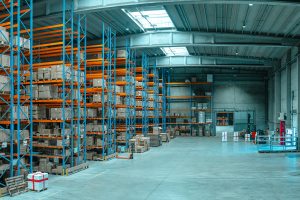More and more manufacturing companies are moving towards servitised models where, instead of hardware, they are selling services or product functionalities. With rising digitalisation in industry and with products increasingly equipped with on-board processing and Internet of Things (IoT) connectivity, manufacturing companies are becoming better positioned to adopt servitisation models. Under such models, companies benefit from a recurring source of revenue, can better build long term relationships with customers and can deliver more customer-centric services while also enhancing predictability across a range of operational and financial metrics. This article by Transforma Insights gets more into that topic.
What is servitisation?
Servitisation (also sometimes known as XaaS or as-a-service) refers to the provision of assets on an ongoing service basis rather than a one-off product sale for a single upfront fee. It is a model where the customer pays based on the services consumed, while the ownership of the asset remains with the provider, who remains responsible for maintenance of the asset. For the end-user, it means switching from a one-off capex expense to an ongoing opex expense. For the provider, it means exchanging a one-off sale for an ongoing revenue stream.


In order to enable this model, remote monitoring of assets is generally required to gain visibility into the location, condition, usage, performance and maintenance requirements of those assets, which is enabled by IoT and often augmented by artificial intelligence. Embedded sensors in devices can provide a steady stream of data on health and utilisation metrics that can help manufacturers to engage in predictive and pre-emptive maintenance and address any challenges such as wear and tear or even potential failures before they occur.
Servitisation isn’t a new concept, but recently its adoption has been growing more rapidly across many industries ranging from consumer products like air conditioners and printers to industrial equipment like large-scale wind turbines and heavy mining machinery. Examples include the printing company HP that offers ‘pay-per-copy’, and the consumer electronics company Bosch that offers washing machines, refrigerators, coffee machines, vacuum cleaners, and dishwashers for a monthly subscription fee. This concept is especially relevant for high-value equipment that experiences relatively low usage, and where a significant proportion of the value lies in intellectual property rather than the physical asset.
Benefits of servitisation
Servitisation can unlock many potential benefits both for OEMs and equipment providers as well as end users.


Recurring revenue business models provide more stability during fluctuating market conditions and allow income streams to become more predictable. Servitisation allows manufacturers to focus on monetising customer relationships and adapting products and services according to customer demand. Servitised propositions can also be associated with additional revenue streams for a range of value-added services that are offered to end-users as extra capabilities and can be purchased if and when needed. This includes potential to offer services on a pay-per-use, or pay-as-you-go, basis where clients may purchase a certain capacity, and the machine shuts down after providing that capacity until the purchase of further credits.
Servitisation techniques enabled by remote monitoring can provide improved visibility into the condition of assets allowing for pre-emptive maintenance and reducing the maintenance cost, machine downtime, on-site travel frequency for maintenance and enhancing the efficiency of field force operations. Alongside this, it offers the opportunity to update onboard device software more frequently and thus new features and functionalities can be added to the device more frequently, or even on-demand, resulting in enhanced customer experience. OEMs or equipment vendors also receive more data feedback from servitised assets, which can then be incorporated to improve future designs and enhance business potential.
For the end user, servitisation can offer simpler contracting terms without upfront costs. In absence of servitisation, the high upfront costs of industrial assets can be a factor restricting organisations from deploying technologies at scale. Industrial assets such as machines and robots can take years for companies to realise a return on their investment, but pay-as-you-go models can avoid this barrier to entry. They can also allow flexibility to scale up or down as business develops, and potentially for end-users to ramp up their fleet during peak seasons or seasonal surges and respond to changing market conditions and client needs. Servitised business models can also allow small- and medium-sized businesses to benefit from using advanced technologies such as robotics in manufacturing facilities without the often cost-prohibitive initial investment. For manufacturers, this increases the addressable size of the market, eventually resulting in more sales and higher revenues. For example, the Georgia Nut company faced a shortage of employees, but high upfront investments and associated risk constrained it from automating its manufacturing plant. Adopting a servitised proposition, it deployed Formic’s ‘robotics-as-a-service’ model, which enabled the company to quickly start with automation in a low-risk way despite having no prior technical experience.
An enabler for a sustainable economy
Servitisation promotes the circular economy in multiple ways. First, it incentivises manufacturers to produce high-quality, durable, and more easily repairable products that have an extended lifecycle. Second, as the products are owned and maintained by manufacturers, the end-of-life disposal responsibility remains theirs which incentivises them to adopt efficient recycling practices and to develop products that can be efficiently recycled. Third, it promotes an economy where products are continually used and maintained to extend their useful lives. There are numerous examples of companies moving towards ‘as-a-service’ models and achieving sustainability benefits as a result. For example, HP’s ‘Printing-as-as-Service’ proposition has reduced packaging use and waste by 57%.


In the energy generation business, a notable factor that limits the expansion of renewable energy assets such as solar panels and wind turbines is the substantial upfront investment cost. X-as-a-service can facilitate pay-per-use or purchase power agreements (PPAs) that can help residents and businesses overcome the challenge of high upfront cost by paying only for the electricity that solar panels or turbines generate, based on remote metering. For example, SunEdison has also adopted the concept with its ‘solar energy-as-a-service’ proposition by allowing consumers to pay for the purchase of solar energy generated by solar panels deployed at their premises instead of investing in the solar panels themselves. Pay-as-you-go models can be particularly impactful in improving energy access for unserved or underserved consumers, and particularly in emerging markets.
What are the challenges faced by OEMs?
When a vendor shifts its business to a servitised asset model, it must also revamp its customer service and support offerings. This includes implementing new billing systems, managing arrears, and developing capabilities for asset recovery and reconditioning. These changes can be substantial, potentially requiring an overhaul of core business processes, for which the existing staff might not be prepared. Additional monetary resources are required to implement such changes, and also to cover the initial cashflow disadvantages of servitisation.
A bright future for servitisation
The adoption of servitisation has the potential to transform the manufacturing sector by enabling new business models and enhancing operational efficiency for both original equipment manufacturers (OEMs) and end-users. In many industries, it will emerge as one of the most powerful drivers for enhancing a manufacturer’s competitiveness.
Comment on this article via X: @IoTNow_ and visit our homepage IoT Now



